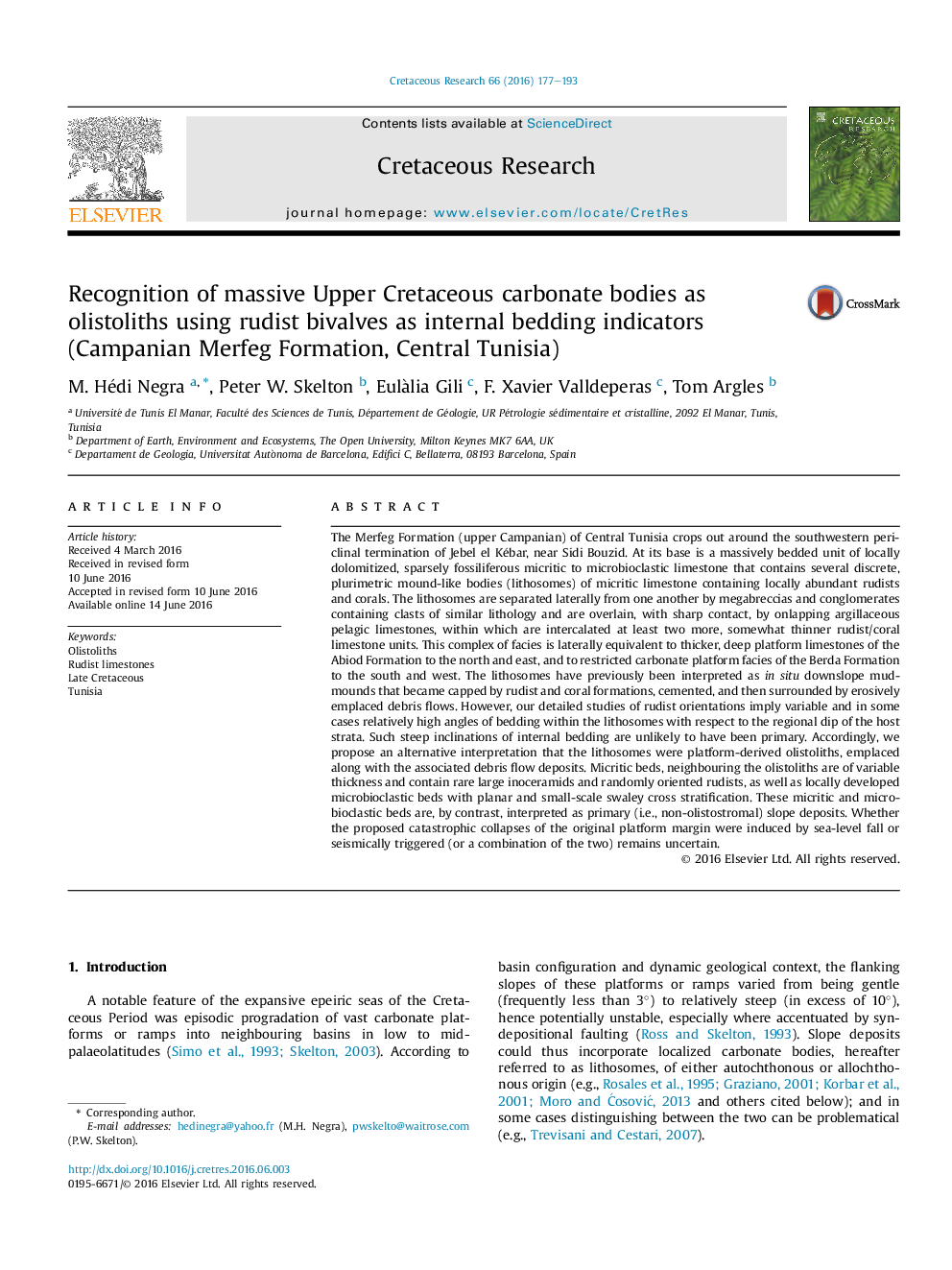| کد مقاله | کد نشریه | سال انتشار | مقاله انگلیسی | نسخه تمام متن |
|---|---|---|---|---|
| 4746708 | 1642057 | 2016 | 17 صفحه PDF | دانلود رایگان |
• Tectonic plate movements in combination with sea-level changes which gave rise to instabilities have led to various forms of mass transport on platform and ramp margins and slopes. In many situations, the recognition of bedding dislocation and rotation is difficult; our study introduces the methodology of rudists orientation measurement as a tool to discriminate between in situ and olistholitic deposits.
• Our approach was based on the study of the orientations of the elongate right (attached) valves of hippuritids within the rudist/coral-bearing lithosomes. These orientations were plotted as equal-area stereographic lower hemisphere projections, using the Stereonet 4.9.5a plotting software of Allmendinger (1995).
• On the basis of the demonstrative example of Jebel el Kébar we tried to establish a model which reconstitutes the different episodes of sedimentation since the installation of rudists on the sea floor until the last feature of the rudist-rich layer observed today on the field.
• Our paper emphasizes the relevance of our method to the analysis of comparable slope deposits elsewhere, so to broaden its interest.
The Merfeg Formation (upper Campanian) of Central Tunisia crops out around the southwestern periclinal termination of Jebel el Kébar, near Sidi Bouzid. At its base is a massively bedded unit of locally dolomitized, sparsely fossiliferous micritic to microbioclastic limestone that contains several discrete, plurimetric mound-like bodies (lithosomes) of micritic limestone containing locally abundant rudists and corals. The lithosomes are separated laterally from one another by megabreccias and conglomerates containing clasts of similar lithology and are overlain, with sharp contact, by onlapping argillaceous pelagic limestones, within which are intercalated at least two more, somewhat thinner rudist/coral limestone units. This complex of facies is laterally equivalent to thicker, deep platform limestones of the Abiod Formation to the north and east, and to restricted carbonate platform facies of the Berda Formation to the south and west. The lithosomes have previously been interpreted as in situ downslope mudmounds that became capped by rudist and coral formations, cemented, and then surrounded by erosively emplaced debris flows. However, our detailed studies of rudist orientations imply variable and in some cases relatively high angles of bedding within the lithosomes with respect to the regional dip of the host strata. Such steep inclinations of internal bedding are unlikely to have been primary. Accordingly, we propose an alternative interpretation that the lithosomes were platform-derived olistoliths, emplaced along with the associated debris flow deposits. Micritic beds, neighbouring the olistoliths are of variable thickness and contain rare large inoceramids and randomly oriented rudists, as well as locally developed microbioclastic beds with planar and small-scale swaley cross stratification. These micritic and microbioclastic beds are, by contrast, interpreted as primary (i.e., non-olistostromal) slope deposits. Whether the proposed catastrophic collapses of the original platform margin were induced by sea-level fall or seismically triggered (or a combination of the two) remains uncertain.
Journal: Cretaceous Research - Volume 66, November 2016, Pages 177–193
